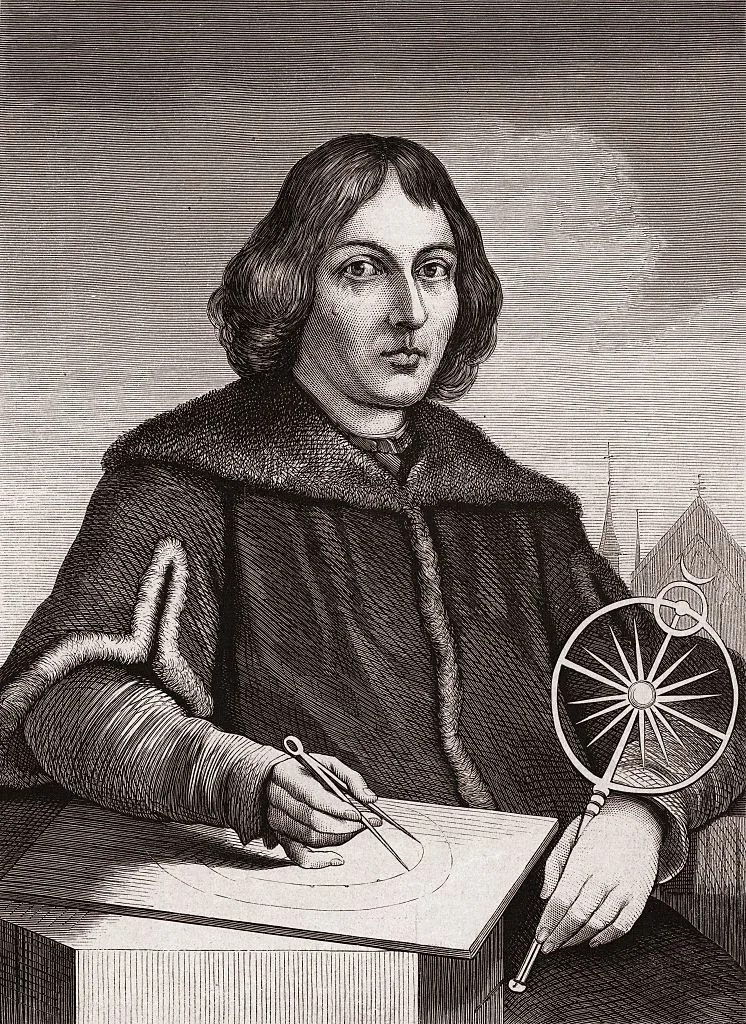Far back in 1508, with only limited tools at his disposal, Nicolaus Copernicus developed a celestial model of a heliocentric planetary system, which he described in his landmark work De revolutionibus orbium coelestium. It was a complete overhaul of our conception of the universe—one that, unfortunately, drew him the the ire of the Catholic Church for decades after his death—and changed the way we look at the stars forever.
And now, some intrepid amateur archaeologists may have stumbled upon one of the very humble tools that once aided Copernicus in his groundbreaking work.According to La Brujula Verde, an amateur archaeological exploration group called the Warminska Grupa Eksploracyjna was searching in the gardens of the Archcathedral Basilica of the Assumption of the Blessed Virgin Mary and Saint Andrew in northern Poland. Exploring the grounds of the religious site, also known as the Frombork Cathedral, the archaeologists employed ground-penetrating radar to uncover an underground chamber with three tunnels. It was here that they discovered a 500-year-old compass just like the one Copernicus is often depicted holding.“This astounding find takes us back to the era when Copernicus made his revolutionary discoveries,” remarked Misja Skarb, a member of the archaeological organization that made the discovery, “…and opens up new possibilities for understanding his methods of work.”
While there isn’t direct evidence linking this particular compass to Copernicus, there’s certainly reason to believe that a link could exist. As Biography notes, after Copernicus’ studies at the University of Cracow in the 1490s—where his fascination with mathematics and the cosmos began—he received a canon cathedral appointment from Frombork.“The canon’s position afforded him the opportunity to fund the continuation of his studies for as long as he liked,” Biography states. “Still, the job demanded much of his schedule; he was only able to pursue his academic interests intermittently, during his free time.’
While Copernicus would later spend time at both the University of Bologna and the University of Padua (among other academic institutions), by 1510, he had returned to Frombork, where he would develop his heliocentric theory.

Heliocentrism, as the word itself suggests, places the Sun as the center of the universe, as opposed to the Church’s preferred geocentric model with the Earth as the center. (It’s not quite right on the scale of the universe, but it’s correct with regards to our Solar System.) Frombork is also where Copernicus would remain for the rest of his life, drawing his final breath there on May 24, 1543.
Indeed, part of what lends credence to the idea that the compass was once in Copernicus’ hands is the fact that it was found not far from where the famed astronomer’s remains had recently been discovered. “For many years,” La Brujula Verde explained, “it was believed that Copernicus was buried within the cathedral, but it wasn’t until 2005 that archaeologists located a partial skull matching his description.”
This compass—the second such instrument found on the grounds—has been sent to the Conservator of Monuments of Poland for preservation and analysis. Once the process is completed, it is expected to be displayed at the nearby Nicolaus Copernicus Museum.


